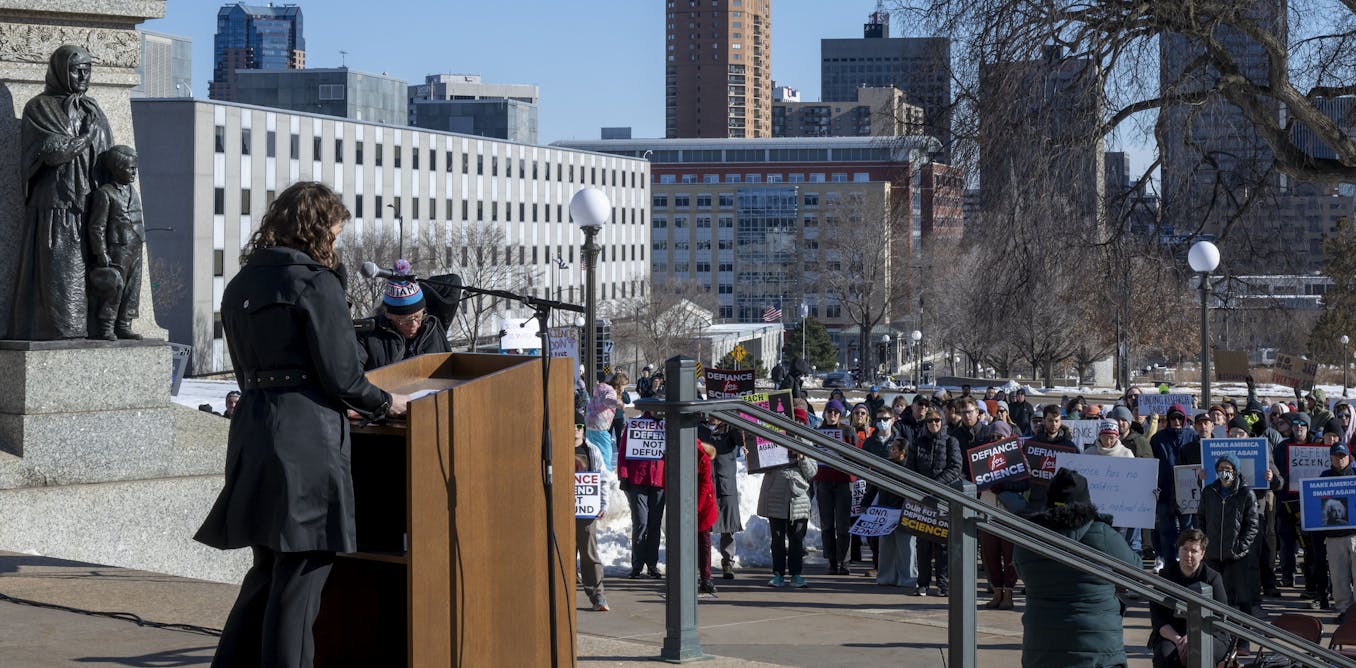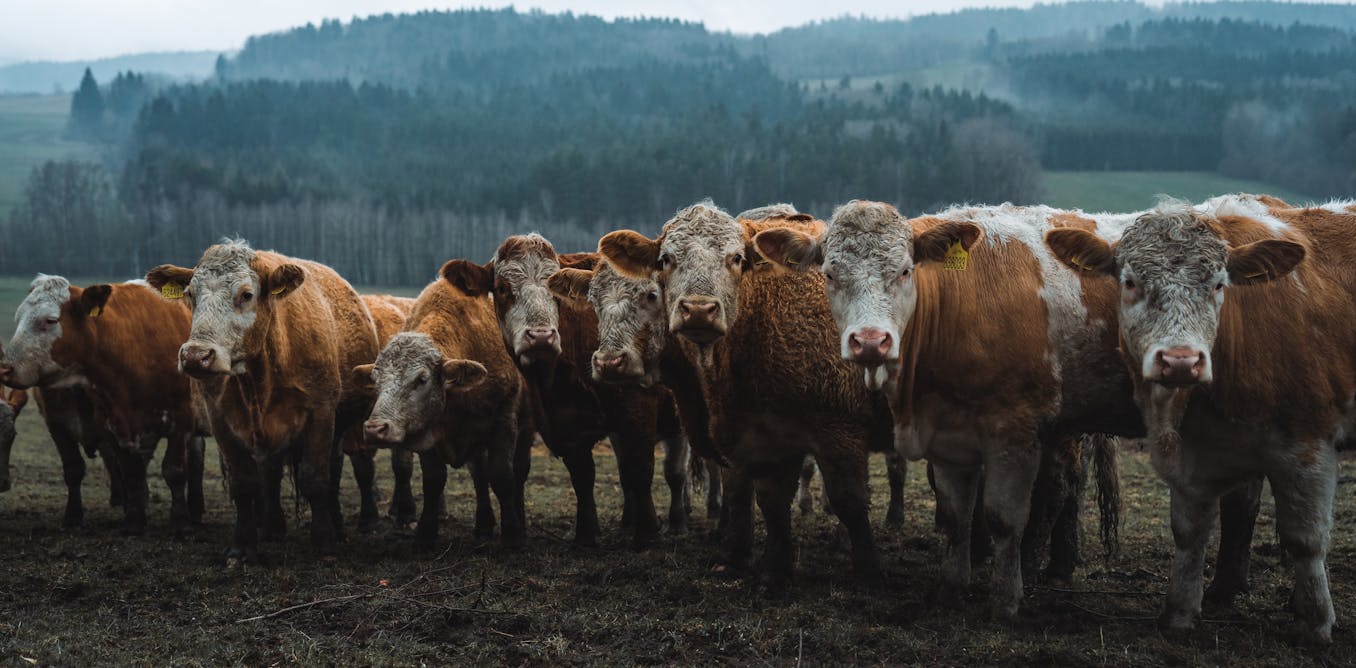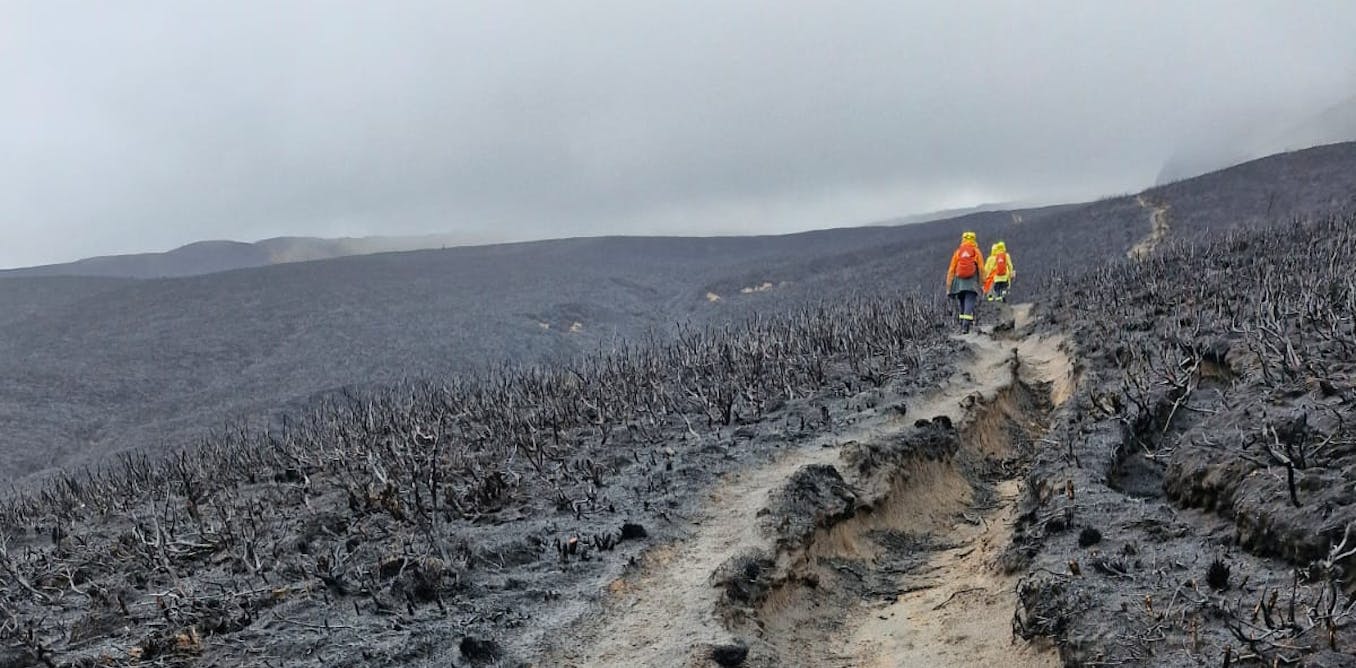Polish civilians train for conflict | DW Documentary
Since Russia’s invasion of Ukraine, Poland has been massively upgrading its military. People are worried the war could spread to their country, and more and more civilians are training how to use weapons.
Poland sees itself as a frontline state on NATO’s eastern flank. As such, the country aims to become one of Europe’s strongest military powers and is mobilizing society to achieve that goal. Increasingly popular are military training programs for civilians, offered nationwide by both state and private organizations. Under the slogan ‘Train with the Army’, the Polish armed forces offer one-day taster courses everywhere from big cities to remote regional areas — and demand has been huge. Agnieszka Wojas and Magda Radomska, two friends from Warsaw, have also taken part. Their training included learning to shoot an AK47 assault rifle. Meanwhile, paramilitary groups are also booming. Kamil Mazur is part of Strzelec, one of the largest such groups in the country. It primarily aims to prepare young people for military service. Mazur comes from Rzeszów, a city in the foothills of the Carpathian Mountains in Poland’s south-east. With the Ukrainian border around 90 kilometers away, the town and its airport have become one of the most important frontline hubs for aid being sent to Ukraine. Every day, military aircraft land here, bringing air defense systems, ammunition and armored vehicles.
#documentary #dwdocumentary
______
DW Documentary (English): https://www.youtube.com/dwdocumentary
DW Documental (Spanish): https://www.youtube.com/dwdocumental
DW Documentary وثائقية دي دبليو (Arabic): https://www.youtube.com/dwdocarabia
DW Doku (German): https://www.youtube.com/dwdoku
DW Documentary हिन्दी (Hindi): https://www.youtube.com/dwdochindi
Watch the video by DW Documentary
Kacper, can you hear me? Can you hear me? Where were you hit? Clean. It’s the leg. Put the bandage on. Got it. War is unpredictable. It’s better to be prepared, to know what to do if things ever get serious. I’d like to see more and more people preparing themselves
For these sorts of situations. This is a rifle range in Augustów, a town in northeast Poland. The president of the local gun club, Jacek Truszkowski, is preparing the range for a public training session. Hold this. Sure. Okay, now we can shoot. Jacek, a 50-year-old truck driver and gun enthusiast,
Runs the club in his spare time. He personally instructs the club members. Twice a month, they get together to practice. Ready? Load! They use live ammunition. We’re open to everyone, not just members. Anyone can come along and see if guns are for them. If you ask me, shooting is for everyone.
Everybody should try it out. How much ammunition do you want? How much is it? Five Zloty. When’s it our turn? It’s busy. You have to wait in line, like in the old days under communism. As well as club members with their own weapons, there are also a lot of newcomers,
Keen to try shooting for the first time. Demand at Poland’s rifle ranges is high. The war in Ukraine has made us incredibly popular. Since the Russian aggression began, we’ve noticed a significant increase in demand especially from people who have no previous experience with weapons. Since the beginning of the war in Ukraine,
Membership at the Augustów shooting club has more than doubled. The new members even include children, accompanied by their parents. Poland has no age restrictions on small-caliber weapons. Aim left. Keep your arms straight. When you finish, take a step back and wait for the next command. Mostly it’s fathers coming with their children
Both boys and girls. We grown-ups have to somehow instill in the younger generation the will to defend themselves. My son started in the Scouts, and they suggested we try the shooting range. I wanted to see what it was like. Overall, I’m very impressed. There’s a focus on safety. And there’s demand for it.
Lots of my friends have been shooting for a long time. But the recent political events have definitely prompted more people to take it up. Shooting practice is in vogue something the state wants to encourage. There are plans to build more than 500 new rifle ranges, and to make accessing firearms simpler.
In 2022, weapons training was made compulsory for school children in the eighth grade. Fears of a Russian attack are driving Poles to take up arms. Jacek says civilians with the right training have a role to play. Poland has a whole army of civilians who know how to shoot. More than 70,000.
Sure, they do it as a sport, but military weapons work the same way. Then there are the hunters. We’re basically a kind of silent reserve force. In an emergency, we could quickly be ready to assist. Overall, Poland is seeing a clear trend towards military preparedness.
And it’s not just citizens who are arming themselves. Since Russia invaded Ukraine, the Polish government has spent around fourteen-and-a-half billion euros on missile defense systems, tanks and warplanes. New equipment is shown off to the public at so-called ‘military picnics’ around the country.
There are plans to increase military spending to five percent of GDP, as well as to raise troop numbers from 164,000 to 300,000. Nowhere in Poland does the war feel closer than here, in the foothills of the Carpathian Mountains. Rzeszów, the regional capital, is less than 90 kilometers from the Ukrainian border.
The city has become a new NATO outpost. Its airport is a hub for Western arms shipments bound for Ukraine. Every day, military aircraft arrive carrying US air defense systems, ammunition and armored vehicles. The area is strictly monitored, and filming is just about impossible. Kamil Mazur was born and grew up in Rzeszów.
The 23-year-old hopes to join the army soon. Since his schooldays, he’s been a volunteer with Strzelec, one of Poland’s many paramilitary groups. Since the war began, the organization has grown in popularity. Here’s my Strzelec dress uniform. Field uniforms, jackets, fleeces, and a whole load of equipment like knives, torches and tactical belts. Helmet.
Gas mask. Hearing protection for the shooting range. Rain poncho, and everything you need for a first aid kit. Kamil sees what he does as preparation for a career in the military. He’s also joined up as a volunteer with the Territorial Defense Force a home guard that exists alongside the professional army.
After school, I was wondering what to do with my life. I decided that at some point I’d like to join the army. That’s my goal. For me, it’s about strengthening our country’s potential and its security. That’s why I’m with Strzelec and why I want to join the army.
Once a month, Kamil goes to a barracks to train with the Territorial Defense Force. He and his unit also assist the regular army in securing the airport. Making coffee? Yeah, want one? Yeah. Kamil still lives with his parents and two younger siblings. His father has just come home from work.
Right now, alongside Strzelec and his duties in the Territorial Defense Force, Kamil hardly has any time to spend with his family. Are you on duty again soon? Yes, definitely sometime this month. At the airport? Yes. The war in Ukraine has made Rzeszów famous. Our city’s airport is now strategically important for the West.
US and NATO troops are stationed there. Poland is playing a new, important role. We’re part of NATO and its first line of defense. If push comes to shove, we’ll be the first to be attacked. So we have to arm ourselves. Russia has attacked Ukraine.
Who’s to say there won’t be attacks on other countries? Of course, we’re proud of our son. He’s constantly on active service, whether it’s with Strzelec or the Territorial Defense Force. Territorial volunteers receive just under 170 euros a month for their service. But they’re not professional soldiers.
A few weeks ago, Kamil applied to join the regular army. He’s waiting to hear back. Many of Kamil’s friends also joined Strzelec while they were still in school. And several are now in the army. He’s meeting up with some of them to go bowling. Let’s go in. Nice, nice. You got one!
What a bomb! For Kamil and his friends, it’s plain to see how the war has changed their hometown. Whether in bars, restaurants or bowling alleys, American soldiers are now ever-present. As well as a NATO stronghold, Rzeszów is also an important logistics hub for the US Army.
Almost 5,000 US military personnel are now stationed in the city. But they don’t talk to journalists. The Americans are part of our everyday lives, like here at the bowling alley. But we have no real contact with each other. We don’t mix. They live in their world, and we live in ours.
Some are already referring to Rzeszów as the new Rammstein a reference to the US air base in Germany. The city has become a symbol of Poland’s new strategic importance within NATO. Poland’s getting a lot more attention now. That’s also forcing us to expand our army
To make it one of the best in Europe, or even in NATO. The armed forces themselves are heavily promoting that expansion. Since October 2022, the army has been offering free one-day courses in some of the country’s barracks. The sessions offer an introduction to basic military skills.
Here in Warsaw, participants have gathered at a military academy. First, they get to witness a short demonstration by real soldiers a simulated combat mission. Today’s demonstration gives an impression of how combat operations are carried out. The squad leader gives the signal.
The cadets then carry out a patrol to track down and eliminate the enemy. Anyone between the ages of 16 and 65 can take part. According to the Ministry of Defense, there are more applicants than available spots. Among those who’ve signed up are Magda Radomska and Agnieszka Wojas.
The two friends from Warsaw heard about the training program on television. We live in such turbulent times. It’s important to get some military training. Hopefully we’ll learn some basics here, things that might be useful in the future. We’ve never fired guns or thrown grenades. We’re here to get a sense of it all,
To gain some completely new experience. Agnieszka is a principal at a primary school, Magda is a fitness trainer. The first thing on their agenda is hand-to-hand combat. I quickly knock the knife out of his hand and move back. Okay, I’ll hold it loosely. Bravo!
In groups of 8 to 10 people, they take part in various exercises: survival training, piloting drones, and weapons training. The instructors are seasoned soldiers, most of whom have previously been deployed abroad. The weapon is very intuitive. There’s only one way it works. A rifle like this is quite heavy.
It takes a lot of practice. But using the rifle is basically quite simple. You just need to memorize each step carefully, so you don’t make any mistakes. Pull this lever down and the weapon is in automatic mode. Here we can check whether there’s a cartridge in the chamber.
The strap shouldn’t be around my neck, right? It’s too short for you. It should be longer. It’s a way of combining the fun with the practical. You have a good time, but you also learn something new. And it’s active. With nice weather and professionals who know exactly what they’re doing.
The Ministry of Defense says the courses are in response to enormous popular demand. After Russia invaded Ukraine, the Polish military was flooded with requests for training from both men and women. For Agnieszka and Magda, it’s now time to learn the proper stance to use when firing a weapon.
This is the shooting position, with my left leg slightly forward. Now I secure the weapon. Step 2, I lower the rifle, remove the magazine and put it away. Step 3: I take a new magazine, pull back the lock and start over again. Agnieszka and Magda don’t get to use live ammunition just yet.
Instead, they try out a simulator. I really enjoyed shooting with handguns. The simulator shows you exactly what mistakes you’re making. I don’t know how well prepared we can be, but exercises like this definitely go some way to helping us be ready if there ever were a conflict situation.
I’ll certainly encourage my friends to come along. And I’ve already decided to sign up to take part in the next course, when places become available. The program’s official aim is to rouse interest and to attract applicants for either the army or the Territorial Defense Force, which offers logistical support to the professional army.
The force’s membership has increased dramatically since the start of the war. As well as its proximity to Ukraine, there’s another reason that Poland is strategically important for NATO. This is the Suwałki Gap, a 70-kilometer-long stretch of land along the Polish-Lithuanian border. This is all that separates the Russian exclave of Kaliningrad from Belarus,
A close ally of Moscow. It’s seen as a potential Achilles heel for the NATO alliance. The atmosphere here is tense, especially since mercenaries from Russia’s Wagner Group have been stationed in Belarus. The shooting range in Augustów is just a 30-minute drive from the Belarusian border.
Every now and then we see military columns on the road here. It’s a reminder that something’s going on. But we don’t think too much about it. We focus on our role as civilians. The army has its own work to do, and we have ours. If anything happens, we’ll be ready.
Remember you’re using a different weapon. You have to adapt. Just when I got used to the other one. Keep going. Last year, Jacek also decided to join the Territorial Defense Force. As the old saying goes: if you want peace, prepare for war. If potential aggressors see that Poland is arming itself,
When they see that we have more and more people who know how to use weapons, and that our firing ranges are becoming more and more popular, then they might think: Okay, it’s not worth attacking Poland. And when you see how Ukrainian civilians have done their bit with their own territorial defense force,
That’s also a motivation for us here in Poland. It shows that even ordinary people who aren’t professional soldiers can make a difference. All good, change! The job of giving military training to Polish civilians largely falls on paramilitary groups like Strzelec. The Ministry of Defense estimates that up to 100,000 people
Train with such groups. And that number is on the rise. Two years ago, Kamil was still a new recruit. Now, he gives lessons on behalf of Strzelec once a week at a Rzeszów high school. Sit down. I said sit down, people. Alongside ‘normal’ lessons, the school offers military training.
It also promotes the local Territorial Defense Force. Our first topic is medicine on the battlefield caring for the wounded. Take all your medical equipment and two backpacks with you. Take the bags and wait in the corridor. We give the wounded person first aid and if possible, get them off the battlefield.
Is that clear? It’s the leg. Put the bandage on. War is unpredictable. It’s better to be prepared, to know what to do if things ever get serious. I’d like to see more and more people preparing themselves for these sorts of situations. Strzelec is Poland’s largest and oldest paramilitary group.
It was founded at the beginning of the 20th century, before Poland was a sovereign state. It was never part of the Polish armed forces, but traditionally, the army has always looked to paramilitary groups like Strzelec to find recruits. Strzelec’s role is to create good citizens. We’re not a military recruitment center.
Yes, most of the people involved will join the army at some point. But we don’t train soldiers here. We turn young people into responsible and patriotic citizens. That’s our job. Having said that, we do see ourselves as part of the national system of defense. Well done. A bit higher.
My parents are probably the best people to ask about how Strzelec has shaped me. But I do think that my personality has changed. I’ve become even more drawn to the military, to hierarchy and following orders. Above all, I think being here has taught me the true meaning of discipline.
The next morning, Kamil prepares for a military parade. It’s Armed Forces Day, and he’s going to take part in the parade wearing his Strzelec dress uniform. The uniform connects us with previous generations who fought for our freedom, so that we can live in an independent country today.
We can’t take that independence for granted. We have to protect it, care for it the way you would a small child. Military traditions play a major role in Poland, a country with a history of being invaded and occupied. On Armed Forces Day, the Battle of Warsaw is commemorated
The Polish victory over Soviet troops in 1920. Parades are held throughout the country. It’s also a chance for the nation to demonstrate its military readiness. Paramilitary troops march side by side with the army. This will probably be Kamil’s last time marching as a member of Strzelec.
The army has accepted him, and in a few weeks, he’ll be sworn in as a professional soldier. He can hardly wait, though he’s not allowed to reveal any details about the unit he’ll be joining. There are always threats. You have to keep an eye on everything and watch how things develop.
I think the future of our army looks good. We have a modern military that’s moving forward. My journey began at Strzelec, and now I’ll be serving in the Polish army. For me it isn’t a job, it’s service. And being ready to serve means being aware of your duty.
The things you’ll sacrifice but also the things you’ll gain. Kamil has no reason to worry about his career prospects. Despite a change of government in 2023, defense spending looks set to continue. For the Polish people, fears of a possible Russian invasion have brought a fresh determination to defend their homeland.
About DW Documentary
DW Documentary gives you information beyond the headlines. Watch top documentaries from German broadcasters and international production companies. Meet intriguing people, travel to distant lands, get a look behind the complexities of daily life and build a deeper understanding of current affairs and global events.
Video “Polish civilians train for conflict | DW Documentary” was uploaded on 03/26/2024 by DW Documentary Youtube channel.

































